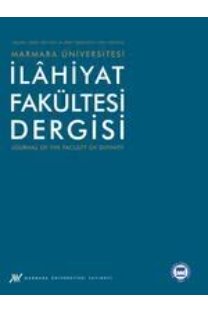İdris Şengül. Kur’an Kıssalarının Tarihî Değeri. Ankara: Otto, 2019, 310 sayfa.
Kur’ân-ı Kerîm’in genel mesajını ve içerdiği konuları anlamaya yönelik telif faaliyetleri tarihinin hicrî I. asrın sonları ile II. asrın başlarından başlayarak günümüze kadar uzandığını söylemek mümkündür. Bu çalışmalardan bazılarını mahiyetleri itibariyle Kur’ân’ın tamamını ele alan klasik tefsir formatındaki -tahlîlî- eserler oluştururken bazılarını da Kur’ân muhtevasında yer alan bazı konuları derinlemesine inceleyen -mevdûî- çalışmalar oluşturmaktadır. Bu bağlamda konu bazlı çalışmaların doğal olarak Kur’ân’da kendisine çokça değinilen meseleler üzerinde yoğunlaştığını söylemek mümkündür. Hal böyle olduğunda Kur’ân muhtevasında ciddi bir yer teşkil eden kıssaların da bu türden konu odaklı çalışmaların gözde başlıklarından birisini teşkil ettiği söylenebilir. Bu siyaktan incelendiğinde Kur’ân kıssaları üzerine yapılan çalışmaların da yeknesak bir görüntü arz etmediği belirtilmelidir. Bazı araştırmaların kıssaları tümel, problematik ve metodolojik olarak incelediği, bazılarının ise tikel kıssa anlatılarındaki muhteva üzerine yoğunlaştığı görülmektedir. Bu bağlamda Türkiye’de de -birinci kısım olarak belirttiğimiz- Kur’ân kıssalarını farklı yönleri itibariyle metodolojik olarak inceleyen araştırmaların yapıldığı bilinmektedir. Bu çalışmalardan birisi de İdris Şengül’ün Kur’an Kıssalarının Tarihi Değeri isimli eseridir. Kullandığı dil ve metodoloji itibariyle hem ilahiyat alanında öğrenim gören talebeleri hem de bu konulara ilgi duyan geniş halk kesimini hedef kitle olarak gördüğü anlaşılan bu çalışmada yazar, Kur’ân’ın temel prensiplerinden ayrılmadan Kur’ân kıssalarını metodolojisi, edebi yönü ve gayeleri itibariyle inceleyerek, bir üslup yöntemi olarak gördüğü kıssaların Kur’ân bütünlüğü içerisindeki yerini ve ilahi mesaja ait muhtevayı yansıtmada bu üslubun önemini göstermeyi amaçlamaktadır (s. 24-5).
İdris Şengül. Historical Value of Qur'anic Stories. Ankara: Otto, 2019, 310 p.
The history of copyright activities aimed at understanding the general message of the Qur'an and the subjects it contains is dated between the end of the 1st century and the 2nd century. It is possible to say that it extends from the beginning of the century to the present day. Some of these studies consist of classical tafsir-format-analysis works that deal with the whole Qur'an in terms of their nature, while some of them are maudui-works that examine some issues in the content of the Qur'an in depth. In this context, it is possible to say that subject-based studies naturally concentrate on the issues that are mentioned a lot in the Qur'an. When this is the case, it can be said that the anecdotes, which have a serious place in the content of the Qur'an, constitute one of the favorite titles of such subject-oriented studies. When examined in this context, it should be noted that the studies on the stories of the Qur'an do not show a uniform appearance. It is seen that some studies examine the tales as universal, problematic and methodological, while others focus on the content of particular tale narratives. In this context, it is known that there are studies that methodologically examine the stories of the Qur'an, which we mentioned as the first part, in terms of different aspects. One of these studies is İdris Şengül's work called The Historical Value of the Qur'anic Anecdotes. In this study, which is understood to see both the students studying in the field of theology and the wide public who are interested in these subjects as the target audience in terms of the language and methodology he uses, the author examines the Qur'an anecdotes in terms of their methodology, literary direction and aims, without leaving the basic principles of the Qur'an, It aims to show the importance of this style in reflecting the place of the anecdotes, which it sees as a style method, within the unity of the Qur'an and the content of the divine message.
___
- İdris Şengül. Kur’an Kıssalarının Tarihî Değeri. Ankara: Otto, 2019, 310 sayfa.
- ISSN: 1302-4973
- Başlangıç: 1963
- Yayıncı: Marmara Üniversitesi
Sayıdaki Diğer Makaleler
Mi‘râc Olayı, İmkânı ve Keyfiyeti
el-Câmi‘u’s-sahîh’in “Eyyâmü’l-Câhiliye” Babı Çerçevesinde Buhârî’ye Göre Câhiliye Kavramı
Memlük Uleması ve Siyasetin Tanzim ve Tenkidi: İdris b. Beydekin Örneği
İdris Şengül. Kur’an Kıssalarının Tarihî Değeri. Ankara: Otto, 2019, 310 sayfa.
Osmanlı Şeyhülislam Fetvalarında Erbâb-ı Menâsıb: Fetâvâ-yı Ali Efendi Örneği
